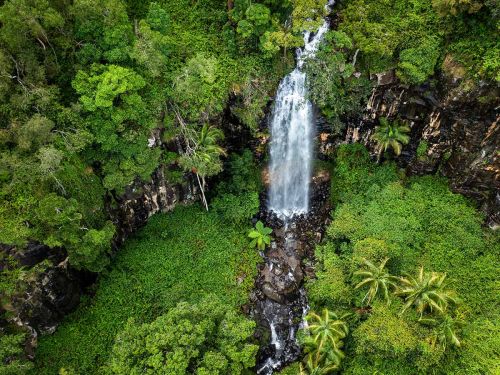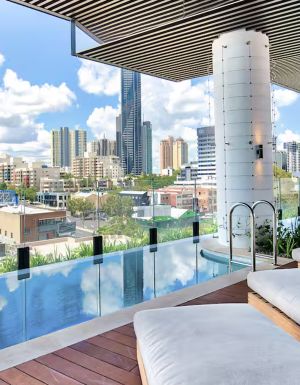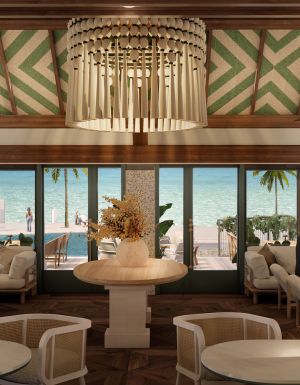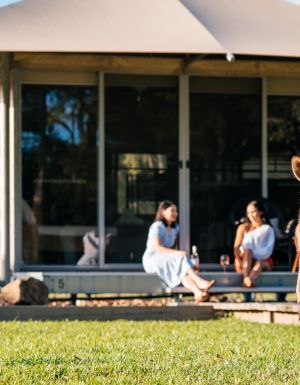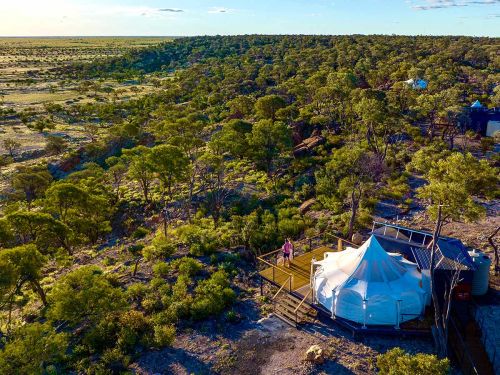Queensland’s Scenic Rim is a gateway to ancient Gondwana rainforests, stylish eco-retreats and thrilling adventures.
Sitting within a volcanic caldera formed around 25 million years ago, the Scenic Rim is the perfect place to get back to nature. Known as the green behind the gold – and only an hour’s drive from the Gold Coast or 90 minutes from Brisbane – this diverse and fascinating region is home to many treasured national parks in the UNESCO World Heritage-listed Gondwana Rainforests of Australia, the world’s largest sub-tropical rainforest. Here, where most of the world’s only remaining Antarctic beech trees, along with other rare and threatened plants and animals, you’ll find unmissable Gondwana Rainforest experiences.
The beauty of it all is that it’s easy to discover. The towns and villages of the Scenic Rim are warm and welcoming, with a wealth of experiences waiting for visitors.

1. Chase waterfalls in Lamington National Park
Known as Woonoongoora in the Yugambeh language, the mountains of Lamington National Park , in the south of the Scenic Rim, are sacred and spiritual. Lace up your hiking boots and set out on some of the 160 kilometres of walking tracks throughout the park, where rainforests, creeks, waterfalls and spectacular views await.
Perched between Tamborine Mountain and Lamington National Park, the village of Beechmont is an ideal base for exploring or relaxing. Those who venture into the peaceful valleys below will find the Lost World, a place to slow your pace and disconnect from the bustle of daily life.

Hit the trails solo, or join ParkTours or Horizon Guides for a guided single or multi-day walking tour. Afterwards, refuel with paddock-to-plate meals cooked over an open fire at chef-hatted restaurant The Paddock at Beechmont Estate.
Spend the night at one of several boutique accommodation options that offer comfortable luxury and incredible views of the rainforest. Try Alcheringa Holiday Houses , Binna Burra Lodge , O’Reilly’s Rainforest Retreat or Beechmont Estate . For a unique glamping option in the Lost World Valley, book into Nightfall .

2. Feel on top of the world at Tamborine Mountain
On Tamborine Mountain , the rainforest is never far away, yet creature comforts abound. Meandering country roads reveal sweeping views of the countryside and beyond to the coast.
Tamborine National Park, the third oldest national park in the world, has many short rainforest walks to waterfalls and lookouts. For lovers of soft adventure, Tamborine Rainforest Skywalk offers a view of the lush rainforest canopy, while TreeTop Challenge at Thunderbird Park is home to ziplines and a high-wire course.

For a change of pace, grab some treats from Picnic Real Food Bar then take them to Robert Sowter Park for incredible views.
You’ll also discover award-winning Tamborine Mountain wineries, distilleries and breweries. Stop in for a tasting or meal at Witches Falls Winery , Tamborine Mountain Distillery or Cauldron Distillery . Weekend markets, shops and galleries offer more reasons to stay longer.

3. Spend time on Country at Mount Barney National Park
The rugged and distinctive peaks of seven mountains dominate the skyline of Mount Barney National Park . It’s a place of deep significance to the local Indigenous people, whose stories, rituals and traditions form their connection with this country.
At 1359 metres, Mt Barney is one of the highest peaks in south-east Queensland. While climbing it is only for the fit and experienced, there are other ways to connect with this ancient landscape. Yarriba Dreaming offers a three-day immersive Indigenous cultural experience at Mt Barney Lodge, an Advanced Ecotourism and adventure retreat. Traditional owner Gurruhmun (meaning ‘Old Man Kangaroo’) helps connect visitors to Country and nature.

Later, stop for a meal at The Overflow Estate 1895 for modern dining with traditional French flair, made with locally sourced ingredients and paired with estate-grown wines. Sleep it off in one of the estate’s five secluded WANDERPods overlooking peaceful Lake Wyaralong.

4. Walk through ancient landscapes in Main Range National Park
Keen bushwalkers will find plenty of tracks to explore in Main Range National Park . Discover them solo, or join Spicers Scenic Rim Trail for guided multi-day walks through the park’s eucalypt forests and rainforest. Each day ends in luxury at secluded eco-camps where guests can revive and gather strength for the next day’s adventure. And here’s a tip: hiking in the cooler higher altitude forests is an ideal way to beat the summer heat.
Beyond the bush, delightful country towns reveal chef-hatted restaurants, wineries, breweries, boutiques and country markets. Local favourites include classic gastro-pub Roadvale Hotel , house-baked treats and incredible breakfast offerings at Scenic Rim Farm Shop and Cafe , and craft brews at Scenic Rim Brewery (which is set in a heritage-listed general store).

For something a bit different, try the innovative set menu at Blume Restaurant , which showcases the best of the region’s produce, or sample the modern Australian cuisine at The Kooroomba Kitchen – after a wine tasting at their cellar door and a stroll through their lavender fields, of course.
Extend your stay with a night – or several – at Mount French Lodge , nestled in picturesque countryside, or enjoy the sophisticated style and secluded luxury of Spicers Hidden Vale or Spicers Peak Lodge .

5. Travel sustainably with expert guides
Sustainable travel is increasingly important to travellers and the Scenic Rim is well placed to meet that need, with a range of guides and operators with a strong commitment to sustainable tourism. Local ecotourism pioneers Binna Burra Lodge, O’Reilly’s Rainforest Retreat and Mt Barney Lodge are among the region’s many businesses that have gained Ecotourism Australia’s ECO Destination Certification.

6. Take to the air in a hot air balloon or helicopter
From a helicopter pub crawl to gently drifting in a hot air balloon, take to the air for a different perspective on the Scenic Rim. Early risers can join Floating Images Hot Air Balloon Flights or Hot Air Balloon Gold Coast on a gentle ride above the region, while indulgence seekers can take an airborne joyride to lunch at a winery or pub – or just to see the sights from the air – with Pterodactyl Helicopters , Elite Helicopters or Gold Coast Helitours . For thrills, take a tandem ride with Oz Paragliding and Hang Gliding or Gold Coast Paragliding for an exhilarating view of the landscape below.

7. Join in Eat Local Month
The Scenic Rim is an Australian leader in the ‘Eat Local’ movement, and their famous Eat Local Month , held each June, is the ultimate foodie experience. It’s a chance to see behind the scenes at farms and wineries and to meet the people who produce the flavours of the region.
The region also champions restaurants and cafes that serve local ingredients all year round, as well as those who work closely with local farmers to create menus with the best of each season’s award-winning produce.



